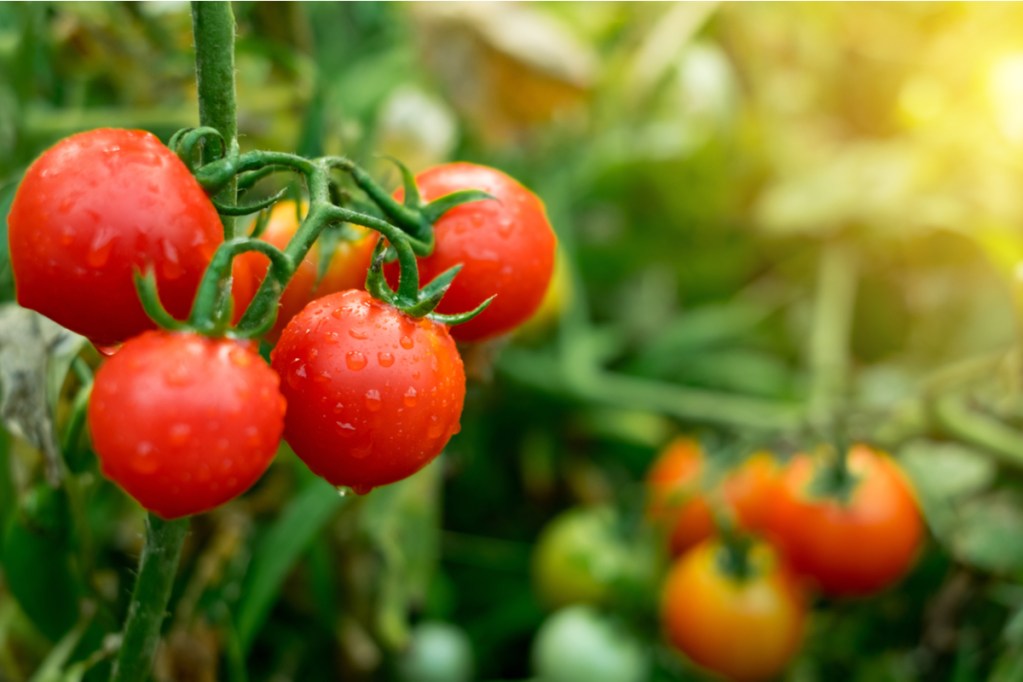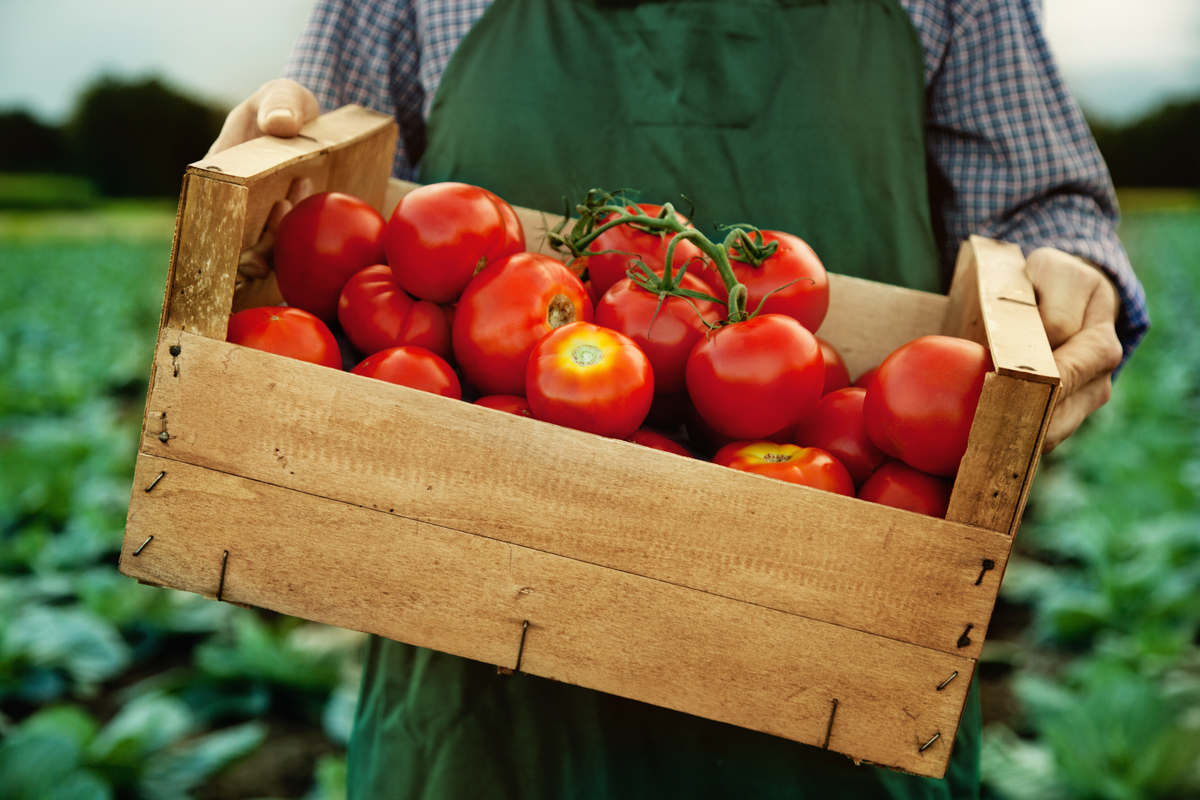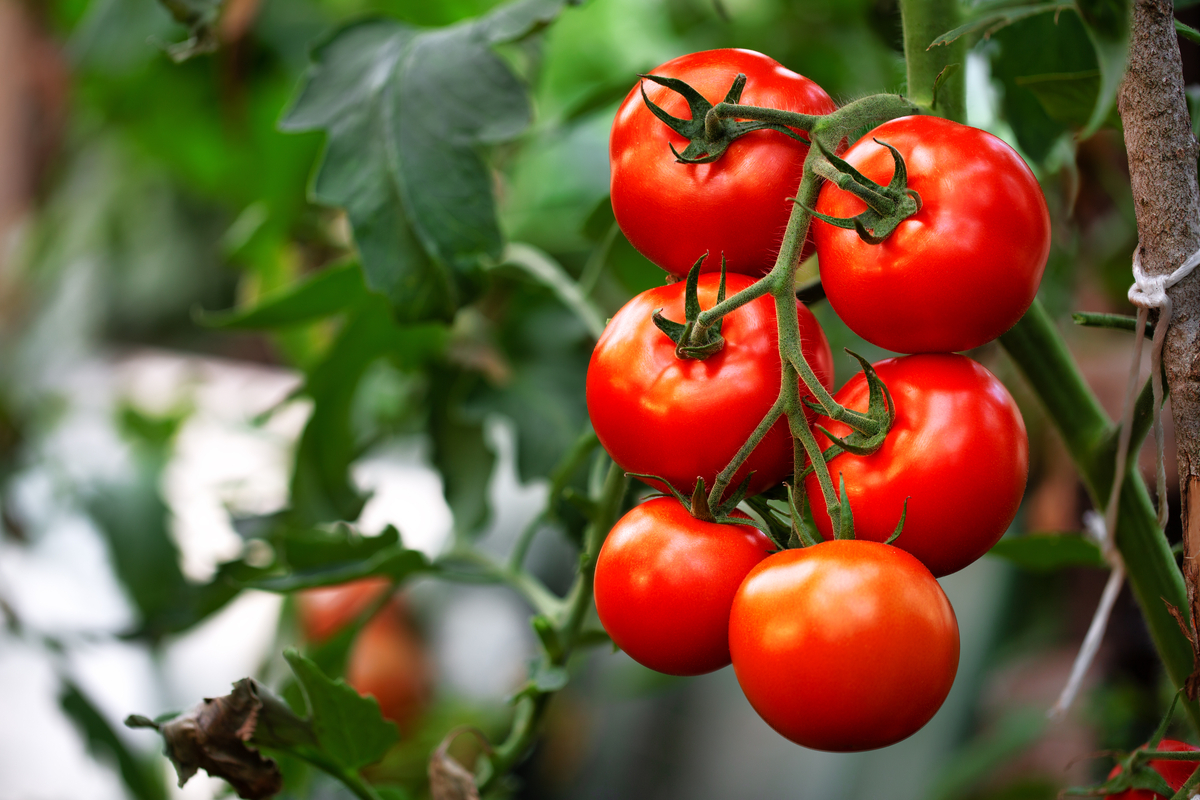
Do tomatoes need full sun? How many hours of sun do tomatoes need? Well, tomatoes are one of many edible crops that have a wide range of varieties. Each one can vary in size and color, from the familiar cherry tomatoes on salads to the larger ones used for slices on burgers and sandwiches.
Some varieties, like Roma tomatoes, are much better for homemade sauces than for fresh consumption — but every tomato needs diligent care. The best thing you can do to ensure you get a flavorful, fruitful harvest is to provide your tomatoes with the proper care. Sunlight is especially important for this warmth-loving crop.

General tips for growing tomatoes
A tomato’s growing season can be anywhere from 60 days to over 100 days, depending on what variety you’ve planted. Don’t be worried if one tomato plant is ready to harvest before another! You do need to be sure, though, that you don’t plant them in the ground too soon. Tomatoes are a warm crop and as such can’t handle frost. In most areas, you shouldn’t transplant your tomatoes into an outdoor garden bed until the late spring or early summer.
Because they require diligent care, there are some mistakes you can make along the way — especially if this is your first time growing tomato plants. Here are some general things to keep in mind to aid in a successful harvest:
- Don’t overcrowd seedlings. An overcrowded environment prevents proper growth and can stress the plants.
- Heat your soil by covering it with black or red plastic. A warm weather crop, they grow best when temperatures and soil are both warm.
- Bury stems when planting. Tomatoes can develop roots along the stem up to the first set of leaves, which will help strengthen them.
- Remove the bottom leaves. Doing this once your tomato plant reaches three feet tall will help keep the plant healthy and prevent diseases.
- Be sure to water regularly. Irregular watering can cause cracking and splitting of the plants, so try to give them an inch of water per week until the fruit starts to ripen.

Different types of sunlight and their effects
Plants require light to grow, but there are different types of sunlight that are determined by the varying amount and intensity: full sun, partial sun, partial shade, and full shade. Most tomato varieties thrive in well-draining soil and full-sun locations. Healthy growth and fruit production require at least eight hours of direct sunlight a day. Anything less could prevent the tomato plants from getting the nutrients they need.
So what does this mean for you and your garden? Let’s take a look at the different types of sunlight and the effects they could have on the tomatoes.
Full sun
Full-sun locations refer to the type of lighting you’ll find in open areas without many trees or buildings around to cast shadows. Full-sun plants, like tomatoes, love being in the sunlight from morning to evening. Because tomatoes are labeled “full sun,” you’ll find that they’ll have their best growth and most abundant harvest in these locations.
Partial sun
Partial sun is similar to partial shade (which we’ll talk about in a minute), though they do have differences. Plants that require partial sun will tolerate more lighting than their counterparts but still require some shade. Locations with morning or evening shade can be ideal for these plants. If a tomato is in a location with partial sun, it will still do all right. You’ll have good growth and a viable harvest, but you may notice that some stems are uneven or the plant isn’t growing to its projected height.
Partial shade
Partial-shade plants are what could be considered the inverse of partial-sun plants. As opposed to being more tolerant of sunlight, they’re more sensitive and would prefer to be in the shade during the afternoon heat. Tomatoes planted in these areas will miss out on essential amounts of sunlight, as they need eight hours a day (the bulk of which is during the afternoon). Without that necessary sunlight, they won’t grow big or strong or produce many fruits.
Full shade
Full-shade plants include more of a spectrum, with some enjoying a bit of indirect light and others preferring full shade, like what’s found under evergreens and in forests. Tomatoes planted in these conditions will not grow well. They may survive, but you’ll notice that they won’t look as happy as other tomato plants in full sun. It’s likely that they won’t produce much fruit, if any, since they won’t be receiving a lot of necessary nutrients needed to thrive.

Where to leave your tomatoes if you grow them indoors
It can be a challenge to grow tomatoes indoors, but it’s possible with a few tips in mind. Ideally, you should be giving your tomato plants at least eight hours of full sun a day. A south-facing windowsill, sunroom, or screen door are good places to leave your tomato plants. If you really can’t find good lighting inside of your home for your tomato plants, it’s a sound idea to invest in a set of full-spectrum LED lights to give them the full dose of lighting that they need.
Even if you do get decent lighting, you may find that grow lights encourage more vigorous growth, especially during colder months. When it comes to positioning, you should keep your grow lights about six to 12 inches away from your plant.

Watering requirements based on sun conditions
Right off the bat, tomatoes in gardens will thrive more easily than those in containers; however, as long as you start with proper sunlight, you’ll have no trouble attempting to grow tomatoes in both garden beds and porch pots. The second biggest factor (once the first condition is met) will be the water. Tomatoes need a lot of water to thrive. They don’t like to be soggy, but they also don’t like to dry out.
To produce a good harvest, you’ll want to give your garden bed tomato plants one to 1.5 inches of water per week. Tomatoes in plant containers should be watered as they begin to dry out since their roots can’t spread as far in search of what they need. When the growing season starts, you should be OK to water them once a day in the morning and have the soil remain damp throughout the day. However, as days get hotter, you may need to water once in the morning and once in the evening to keep your tomatoes hydrated.
With proper, diligent care, you should be able to enjoy a fruitful, bountiful harvest from your tomato plants. Just be sure to keep these care tips in mind and especially pay attention to how much light they’re receiving.


